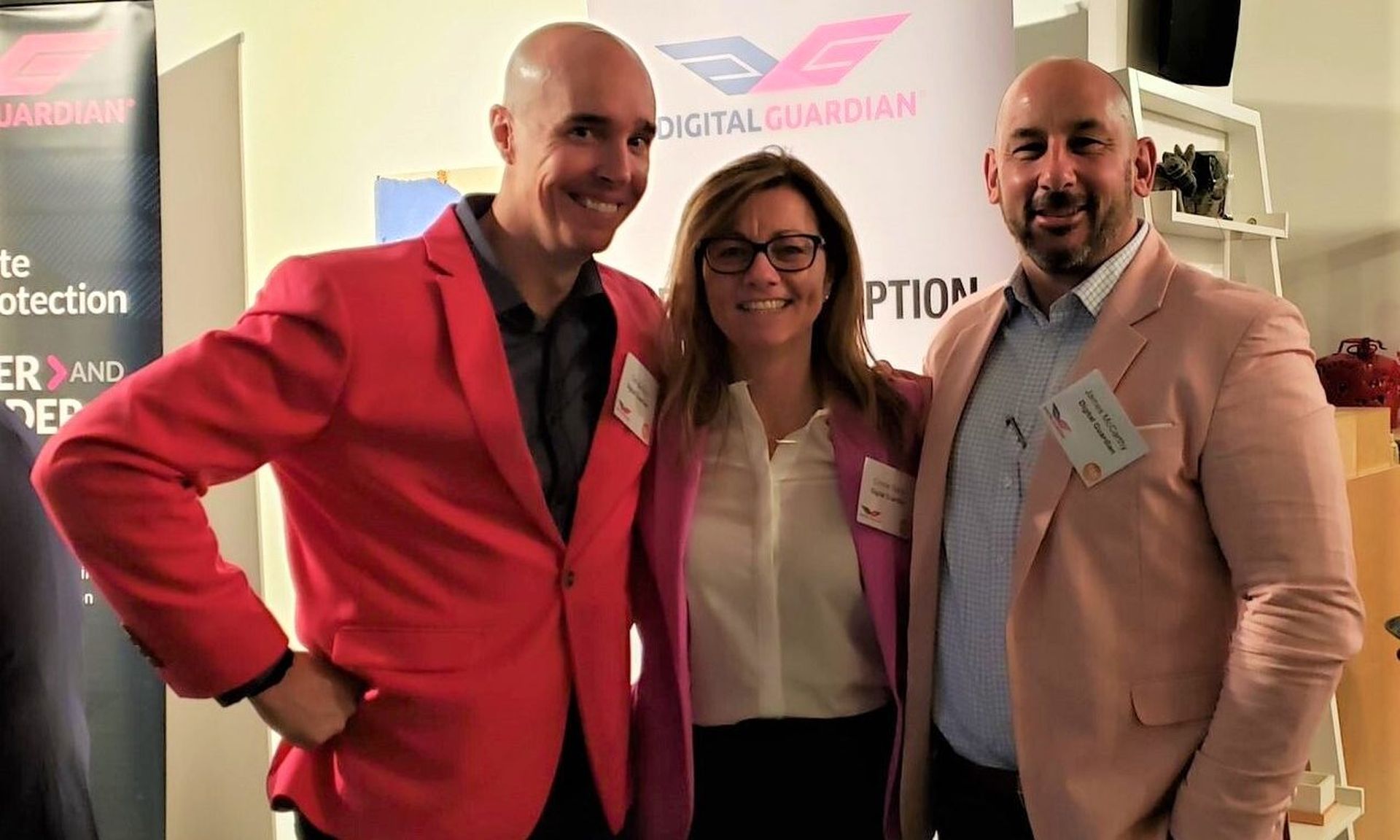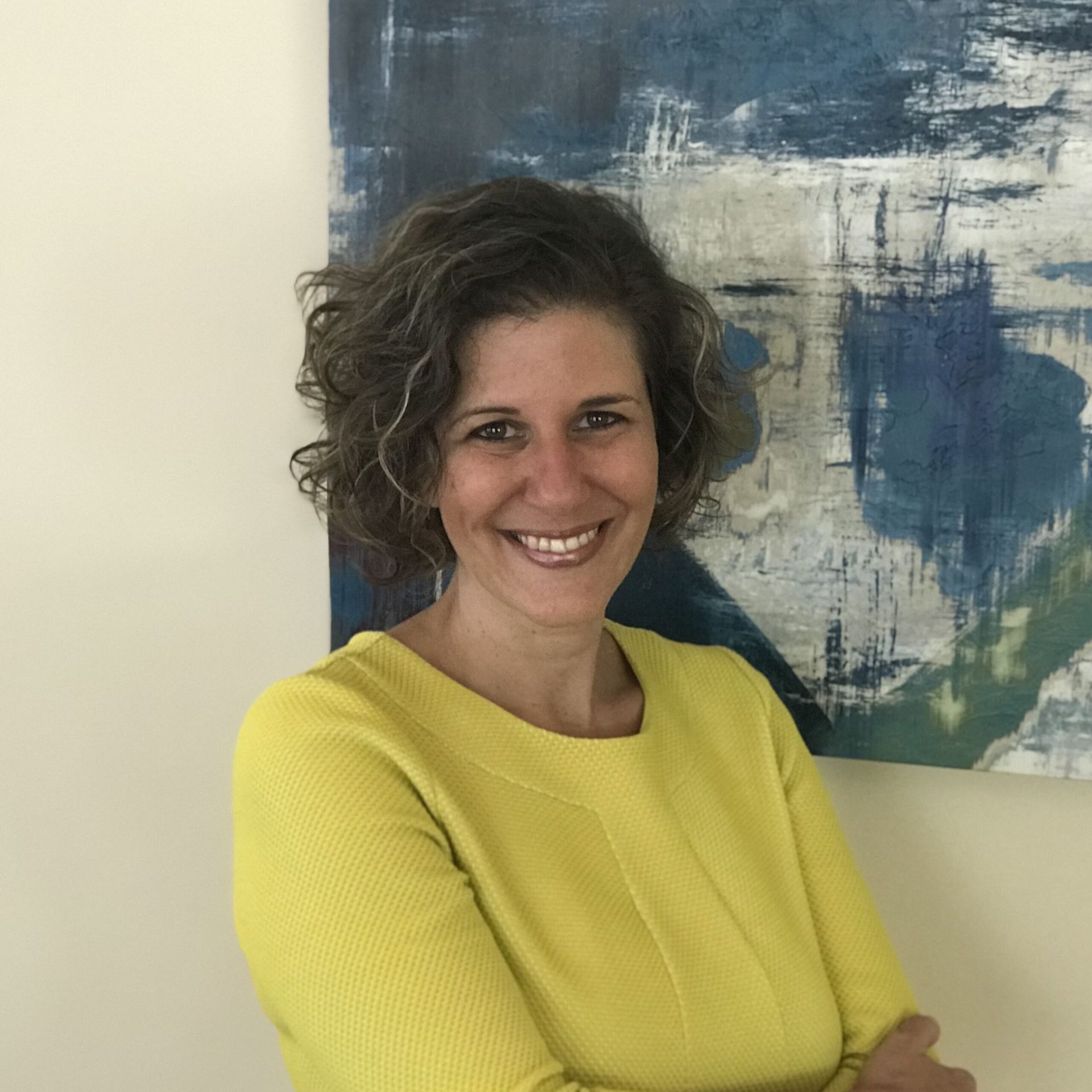In Digital Guardian’s Debra Danielson and Connie Stack, chief technology officer and chief strategy officer respectively, you have two very different, but equally inspiring career evolutions.
Granted, neither went to work with much interest in computers. Danielson started out in engineering, and Stack in marketing. But that changed relatively quickly. Danielson became a developer after realizing she was, in her words, "the world's crappiest QA person." She spent 15 years hand coding and then transitioned to IT management. And Stack fell in love with data while working in retail, seeing first hand the power of information after launching a co-branded credit card with PNC National Bank. She would get reports and reports about customer buying habits and thought, as she put it, "this is where I want to spend my time."
Both say they were often the only women in leadership meetings once they made the transition to tech. But both are also relatively encouraged by what they’re seeing more recently: women at the helm of companies, even if the road to get there took more work, and companies seeking women hires, even if sometimes to accommodate societal pressures.
It's not perfect – but it’s progress.
SC Media spoke to both women recently about their own experiences, the evolution of diversity in the information security market, and the power of pink.
Debra, you spent time focusing on M&A opportunities. That seems like a crash course in business operations.
Danielson: Yes, doing technology assessment of potential acquisitions. So I would basically scout companies and I would look for the ones that were interesting. I'd learn more about them, I'd bring them into the organization to take a look. And then I would marshal the whole technology diligence process from the beginning to close, setting up for integration.
It was my absolute dream job. And during that time I met this COO at this company called Xceedium that we were acquiring and his name was Mo Rosen. And of course Mo is the CEO of Digital Guardian now. And when Broadcom acquired CA, both of us got laid off and he pulled me with him to Digital Guardian to run the CTO gig.
But one of the things I love about that 10 years of my life that I spent in mergers and acquisitions is it was like a PhD in technology, in how to run an engineering organization the right way, because I got to look at hundreds of companies, kimono open, and see what their technology was, and how they were building their product. And boy, it was like a learning bonanza from beginning to end. I'm really strong with patterns, and so one of the things I was able to do as a result of that was create this set of patterns and anti-patterns for being successful in a [software-as-a-service] business.

And Connie, you have a background with the startup community?
Stack: WordStream was my first, then I worked for another company called Optus that did CRM just for pharmaceutical marketing. About 10 years ago I made the switch into security. It was different. But I kind of came at things like, "Hey, I'm a smart enough marketer. You apply the same skills in a different area." But you really learn how nuanced the IT security market can be. We're marketing to a lot of men, who are still about 90 percent of the people who consume our product. So you have to be conscientious about that of course, because it does impact how you market.
Oh, and I wore my pink today. Because one of the first things I did when I came over to Digital Guardian was convince the board of directors at the time, and the CEO, that pink would be a great new color for the rebranded Digital Guardian.
Did it take convincing?
Stack: It was pretty funny, because I got, "Are you sure, Connie?" In order to prove out the theory, the very first conference that we did when we relaunched the rebrand of Verdasys to Digital Guardian, I produced 500 pink t-shirts and 500 blue t-shirts. Pink t-shirts went first.
I’ve always been in tech journalism, focusing for a long time on government, and I would go to a conference wearing a white suit in a sea of black and navy blue. I figured people would remember me.
Stack: Honestly, that was the strategy behind the pink. We got noticed.
So as you both look around and see the experiences of other women in infosec today, do you feel like the opportunities have improved? How has it evolved?
Danielson: Most of the opportunities that I've had as a woman in technology, if they were facilitated by anything outside of my own dogged stubbornness, it was almost always a single advocate – a single person who was willing not just to stand up for me, but to advocate for me. A lot of that helped break through some of the easy perceptions that we know from the science. We know that women are perceived to be less technical, less mathematical than men, even if in a test they do exactly the same. There is this set of expectations that's just wired into our monkey brains, the lizard brain, that we have to overcome. Even as women, we have to overcome this. We have to overcome our first reaction and our gut reaction about what the outside tells about what the inside capability is. And those advocates are truly the door openers, at least for me in my career.
Were those advocates men and women? In your own experience?
Danielson: Well, first of all, during my life in technology, there have never been women. I was always the only woman in the room until I came to Digital Guardian. My entire life for 25 years was meetings with 15 men and me. Meetings with seven men and me. Meetings with 20 men and me. So all of my door openers have been men. All of them.
Stack: I definitely had some experiences like that, a level of advocacy. But I honestly have to say, and I feel fortunate in this, doors have generally been held open and not held closed. Some of the barriers are real. But over the last few years, there has been such an acknowledgement and a recognition of the barriers and of the fact that we may have these internal biases. I almost feel like being female in infosec is an advantage right now because people are looking to diversify their leadership. They're looking to diversify their teams. They are looking to diversify engineering. So if you are as good, and can perform as well, and do as well as through an interview process as a male so you're exactly the same, I have to tell you – I think some companies now will pick the female.

I do feel like the conversation is changing. Whether it's the Me Too movement, whether it's just general discussions of diversity, there's pressure on companies.
Danielson: I remember putting together a presentation a number of years ago for a women in tech conference. And I went up to Google and I typed in “CEO” and then I shifted over to the image view and I counted. And I counted 63 white men before I saw one person of color or one woman. If you go through that search today, the front page is covered with women and men. There was this moment in time when the women in big tech stepped up. Ginni Rometty, Marissa Mayer, Sheryl [Sanberg], Ursula Burns… All of a sudden there were women running big tech companies, women in these leadership positions. The boards became more aware of the importance of having diversity.
I strongly believe that this is a systemic problem in the absolute classic sense of the word. There isn't one solution that's ever going to make this better. We've got a pipeline problem. We've got a perception problem. We've got leadership problems. We've got problems top to bottom. But like any other system problem, you have to attack it from multiple areas. Having the tone from the top be women faces in and among all of those white men is really, in my opinion, the most important thing.
We hear about the women in the top spots most. But to me, the companies that have women scattered throughout the ranks will have the bigger impact, because they’re creating a feeder scenario.
Danielson: A statistically significant percentage of women CEOs started out in their first job at the company they eventually ended up [leading] – something like two to three times that of male CEOs. So that rising up has actually been really the only path that women had for, at least in big tech, quite a while. You are proving yourself at every level over and over and over and over again.
Does the IT community do enough to make women feel welcome?
Stack: Having grown up in more traditional marketing roles, where you get to flex some creative muscle, a lot of women fear that [ability to be creative] gets lost when you get into a tech company. The opposite is actually true. And I genuinely mean that. You have to get very creative in this space because it's competitive, it's rapidly changing and evolving and moving. As females in tech, we’ve got to evangelize that a little bit. We have to tell young people who are coming up on the technology side, even on the business side, marketing, HR, whatever it is, "Hey, tech is a cool place to be.”
Danielson: Over the years I think the tech environments have really become optimized for the top players. So, optimized for the guys. There was a really interesting experiment with Maria Klawe in Harvey Mudd College. She came in with 18 percent of the graduating computer science class being women. When she finished her experiment, it was 53 percent. And she did that doing three simple things. She redecorated the computer labs so that they weren't sterile and smelling like gym bags. She changed the problem sets so that there were different choices – it wasn’t always about the NFL for example. And then she created three different tracks of freshmen one-on-one computer science, because there was this incredible unevenness – boys who had been programming since they were eight and others who were coming into college with no prior experience.
I think you need to think of those three things as a lens that we have to use to look at these businesses that are really heavily aligned towards making the guys happy – because that's what we've been doing for a long time. Then you see that there is this path to balancing it out, and making it more attractive for women to come in, feel like they belong, not always feel like they're the odd man out, but own it.
So thanks, Connie, for the pink in the logo.
Stack: You are very welcome.



